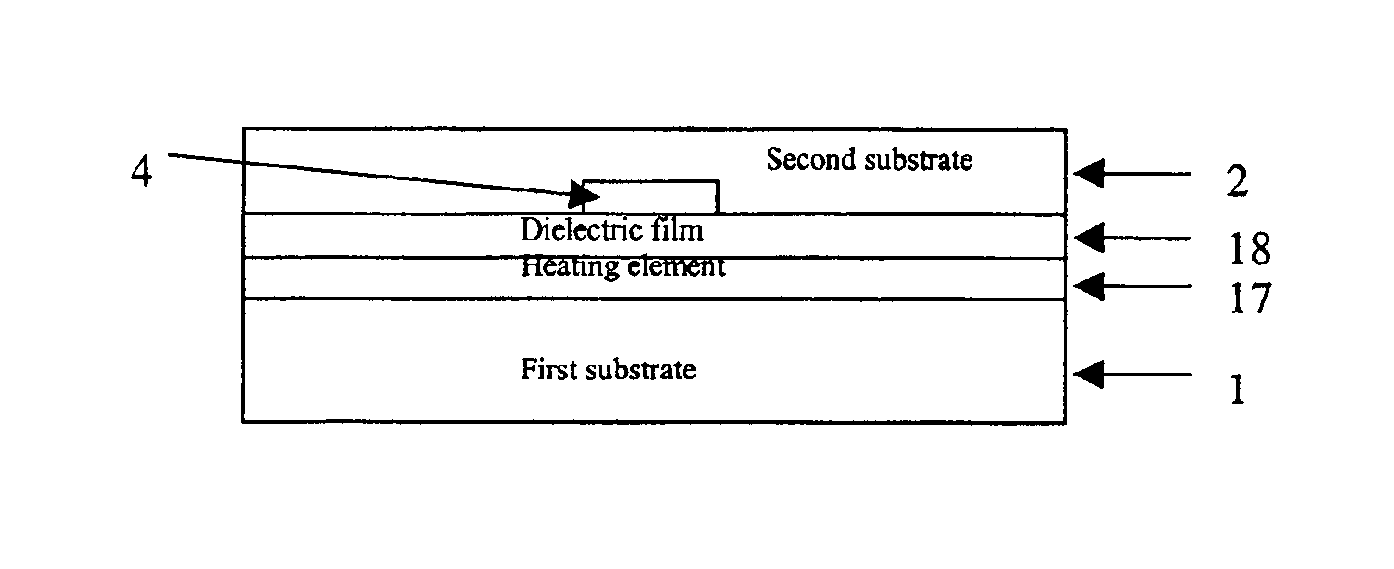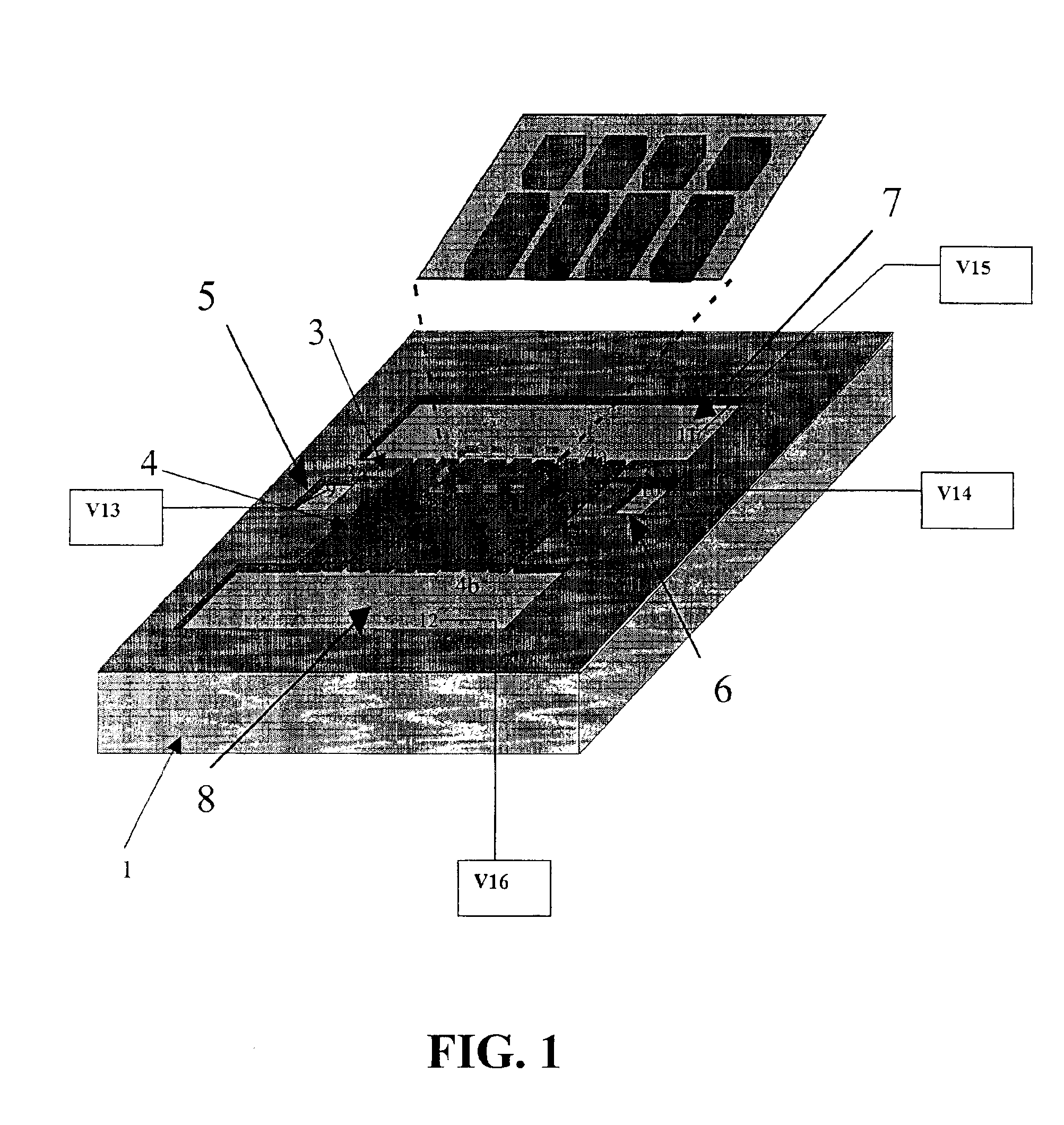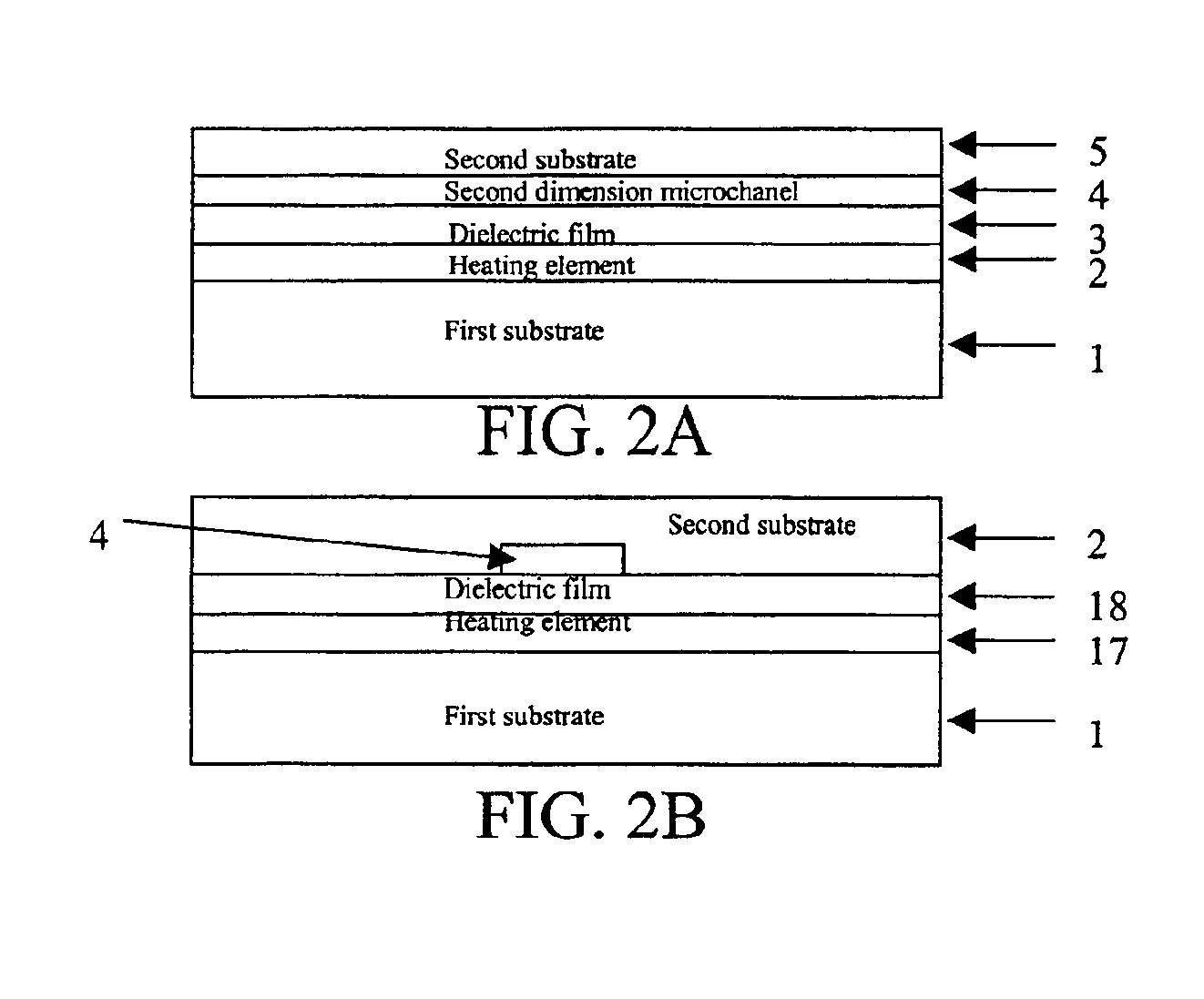Two dimensional microfluidic gene scanner
a gene scanner and microfluidic technology, applied in the field of two-dimensional microfluidic gene scanners, can solve the problems of large-scale dna sequencing to detect mutations that is not efficient, high cost involved in sequencing, and development of a large number of potentially more cost-effective pre-screening techniques, so as to achieve advantageous sample separation and manipulation, high throughput, and high efficiency
- Summary
- Abstract
- Description
- Claims
- Application Information
AI Technical Summary
Benefits of technology
Problems solved by technology
Method used
Image
Examples
Embodiment Construction
[0037]According to an embodiment of the invention illustrated in FIG. 1, a microfluidic 2-D gel electrophoresis apparatus is provided. Microfluidic 2-D gel electrophoresis apparatus may comprise a first planar substrate 1 containing one or more first-dimension microchannels 3 for first dimension separation, as well as a second planar substrate 2 (bonded to first planar substrate 1) to provide enclosure for one or more second-dimension microchannels 4 for second dimension separation.
[0038]According to one embodiment, the first-dimension microchannel 3 may extend in a first direction, while an array of one or more second-dimension microchannels 4 may extend from, or intersect with, the first-dimension microchannel 3 in a second direction. Preferably the second direction is orthogonal to the first direction. The first-dimension microchannel 3 may have a first end 3a and a second end 3b. Similarly, an array of one or more second-dimension microchannels 4 may each have a first end 4a and...
PUM
| Property | Measurement | Unit |
|---|---|---|
| inner width | aaaaa | aaaaa |
| inner width | aaaaa | aaaaa |
| inner width | aaaaa | aaaaa |
Abstract
Description
Claims
Application Information
 Login to View More
Login to View More - R&D
- Intellectual Property
- Life Sciences
- Materials
- Tech Scout
- Unparalleled Data Quality
- Higher Quality Content
- 60% Fewer Hallucinations
Browse by: Latest US Patents, China's latest patents, Technical Efficacy Thesaurus, Application Domain, Technology Topic, Popular Technical Reports.
© 2025 PatSnap. All rights reserved.Legal|Privacy policy|Modern Slavery Act Transparency Statement|Sitemap|About US| Contact US: help@patsnap.com



